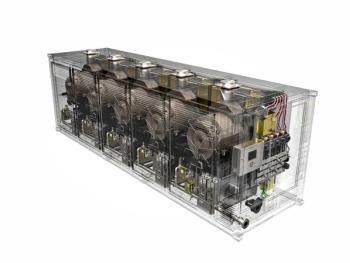
GE Vernova VPs Discuss Challenges of the Energy Transition
In Part 1 of this two-part video interview, GE Vernova's VP of Engineering Gas Power, John Intile, and Shane Long, VP of Global Supply Chain, discuss some of the top challenges of the energy transition.
While touring GE Vernova’s gas turbine manufacturing facility in Greenville, South Carolina, Turbomachinery International interviewed GE Vernova's VP of Engineering Gas Power, John Intile, and Shane Long, VP of Global Supply Chain. In Part 1 of this two-part interview, the duo discusses some of the top challenges of the energy transition.
Long said: “First, let's describe the problem: We have to simultaneously electrify the world while decarbonizing it. The IEA estimates by 2040 we'll need 55% more electricity than we did in 2022. No notable goals have net-zero-carbon emissions by 2040 or 2050. So, one thing that's top of mind for challenges is just basic uncertainty—uncertainty in global policies with respect to carbon emissions; uncertainty in geopolitical tensions that exist in the world; and then uncertainty with how we can pay for this and economic policies that are needed to solve these challenges.”
Intile said: “After retiring most of the uncertainty, you start to put the plans into motion. When you think about the scale and capacity required to grow at the need of meeting the demands for what we see in 2040—project permitting, site readiness, etc.—everything it takes to get power generation up and running - it's no small feat. And that power generation is going to feed into a grid that, quite honestly, has a lot of questions about its stability. So, how do we think about challenges such as grid forming and how these electrons move from the source of generation to consumption—that's going to be a challenge that was not there in the past decade. With more renewable penetration—meaning that the power can fluctuate when the sun is not shining, when the wind is not blowing—we have to account for that, so do we have the right amount of inertia on the grid to account for that?”
Newsletter
Power your knowledge with the latest in turbine technology, engineering advances, and energy solutions—subscribe to Turbomachinery International today.




